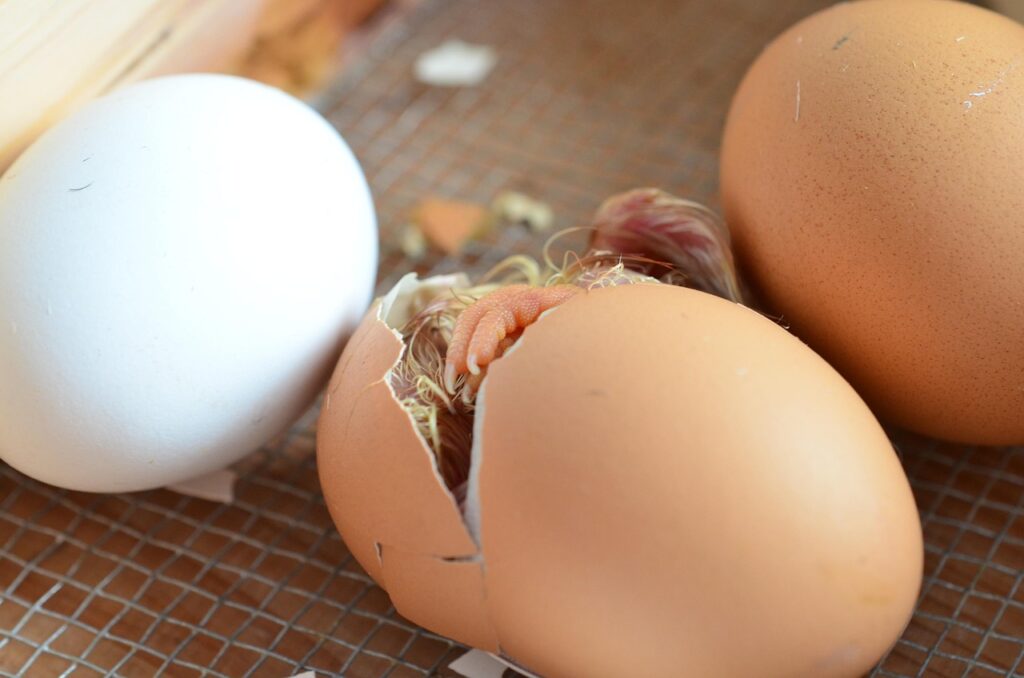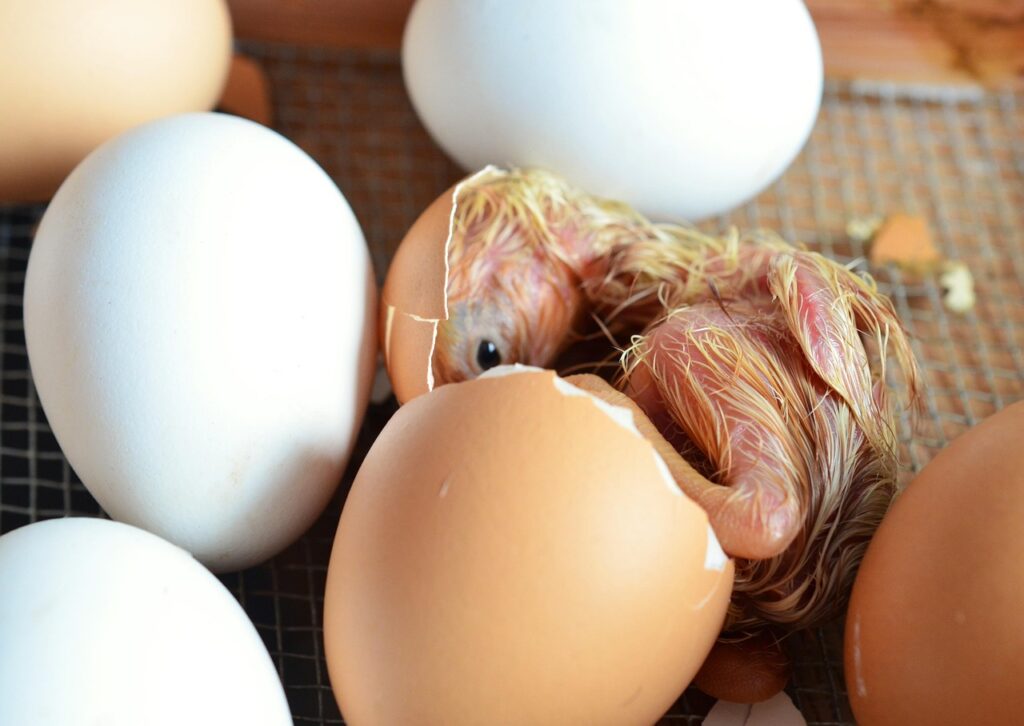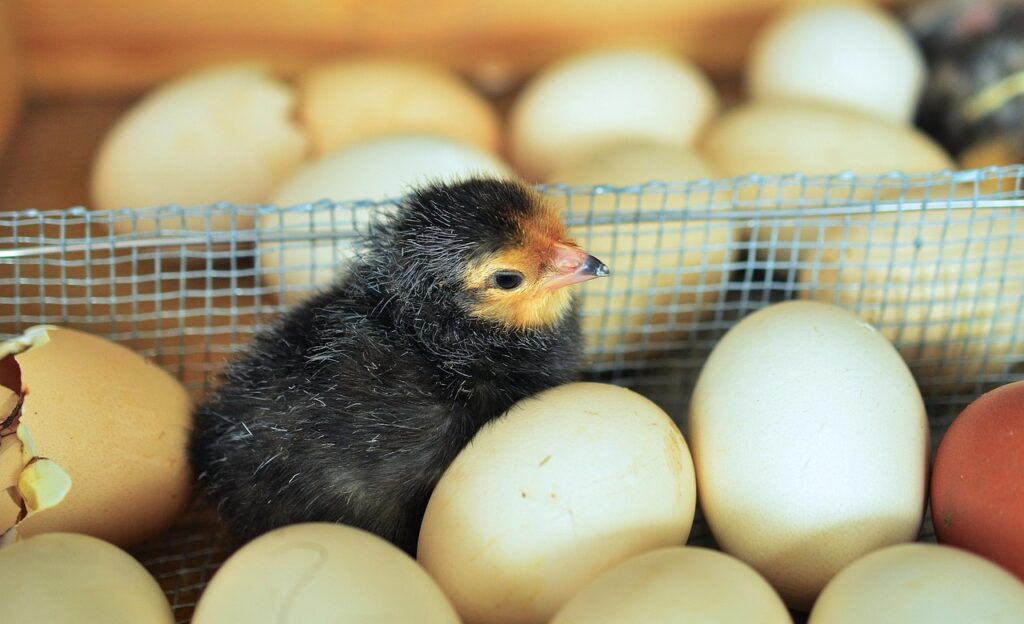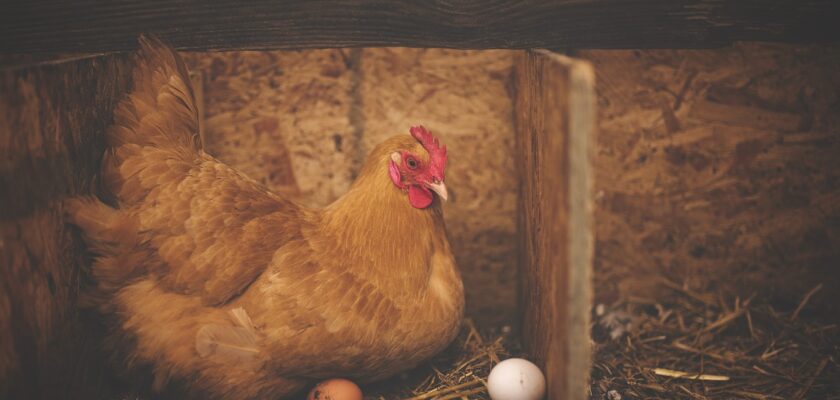Introduction
Hatching eggs is both a science and an art. Whether you’re a backyard poultry enthusiast or starting your first homesteading project, knowing how to hatch an egg successfully is essential for ensuring healthy chicks and a rewarding experience. This step-by-step guide will walk you through the full process, from egg selection to post-hatch chick care.

Image by congerdesign from Pixabay
Understanding the Basics of Egg Hatching
What Types of Eggs Can Be Hatched?
You can hatch a wide variety of bird eggs including chickens, ducks, quail, turkeys, and even exotic birds like parrots. However, chicken eggs are most common for beginners due to their predictability and ease of care.
Natural vs. Artificial Incubation
- Natural incubation relies on a broody hen to hatch the eggs.
- Artificial incubation uses machines to mimic the hen’s warmth, humidity, and turning actions.
Artificial incubation offers more control over the environment and is ideal for larger batches or predictable results.
Preparing for Incubation
Choosing Fertile Eggs
Ensure the eggs:
- Come from healthy, well-fed parents
- Are no older than 7 days
- Have no cracks or deformities
- Are stored at 55–65°F before incubation
Selecting an Incubator
Look for features such as:
- Digital temperature and humidity control
- Automatic egg turners
- Clear viewing window
A good incubator sets the foundation for a successful hatch.
Incubator Setup Checklist
| Task | Description |
| Sanitize unit | Clean before every batch |
| Calibrate controls | Test temperature and humidity settings |
| Test run | Run 24 hours before adding eggs |
| Placement | Keep in a draft-free, stable room |

Photo by ArtHouse Studio
Step-by-Step Egg Incubation Process
Step 1: Clean and Sanitize the Incubator
Bacteria is the enemy. Use a diluted bleach solution (10%) or specialized incubator cleaner.
Step 2: Pre-Warm the Incubator
Let it run at 99.5°F for at least 24 hours before loading your eggs.
Step 3: Mark the Eggs
Use a pencil to mark “X” on one side and “O” on the other to keep track of turning.
Step 4: Load the Eggs Properly
Place eggs pointy-end down in the tray, ensuring adequate spacing for airflow.
Step 5: Maintain Proper Temperature
Keep a stable 99.5°F for forced-air incubators and 101.5°F for still-air models.
Step 6: Control Humidity Levels
- Days 1–18: 45–50% humidity
- Days 19–21: Increase to 65–70%
Use a hygrometer and adjust with water trays or sponges.
Step 7: Turn the Eggs Regularly
Turn eggs at least 3–5 times per day until day 18. Automatic turners are ideal.
Step 8: Candle the Eggs for Fertility
Candle eggs on day 7 and 14 to check embryo development using a bright light source.
Step 9: Monitor Daily for Changes
Keep a log of:
- Temperature
- Humidity
- Turning schedule
Step 10: Prepare for Lockdown Period
On day 18:
- Stop turning eggs
- Increase humidity
- Avoid opening the incubator
Step 11: Avoid Opening During Lockdown
Opening the incubator lowers humidity, risking chick suffocation.
Step 12: Hatch Day Expectations
Chicks will pip (crack) the shell, rest, and fully emerge within 24 hours. Do not assist unless absolutely necessary.
Troubleshooting Common Hatching Problems
Why Aren’t My Eggs Hatching?
- Infertile eggs
- Temperature too high/low
- Incorrect humidity
- Poor egg handling
Signs of Healthy vs. Unhealthy Embryos
| Observation | Healthy | Unhealthy |
| Veining | Visible and branching | Absent or cloudy |
| Movement | Active during candling | No movement |
| Shell | No leaks or cracks | Discoloration or damage |

Image by congerdesign from Pixabay
Post-Hatch Care
Cleaning the Incubator After Use
Remove all eggshells and membranes. Sanitize thoroughly before storing.
Caring for New Chicks
- Leave chicks in the incubator for 24 hours
- Transfer to a brooder with 95°F heat
- Provide clean water and chick starter feed
FAQs
1. How long does it take to hatch a chicken egg?
Typically 21 days, but it can range from 20–22 depending on conditions.
2. Can I hatch store-bought eggs?
No. Store eggs are usually unfertilized and refrigerated, making them nonviable.
3. How do I know if my egg is fertilized?
Candle it around day 7 to look for veins and movement.
4. What happens if humidity is too low?
Low humidity can shrink the air sac too fast and trap chicks inside the shell.
5. Can I reuse eggs that didn’t hatch?
No. Dispose of unhatched eggs after confirming no signs of life post-hatch day.
6. Is helping a chick hatch a good idea?
Only as a last resort. Intervening too early can cause fatal bleeding or deformities.

Image by congerdesign from Pixabay
Conclusion
Learning how to hatch an egg successfully is a rewarding process that combines biology, patience, and precision. By following these 21 proven steps, you increase the odds of healthy, thriving chicks. Whether you’re incubating as a hobby or starting a small farm, this guide lays a strong foundation for your hatching journey.
